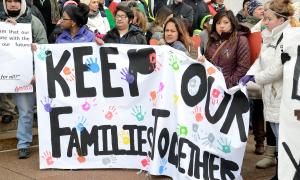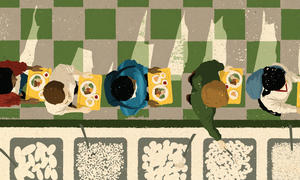article
260 Results
article
Why Heteronormativity Is Harmful

The argument is not whether being LGBT is a choice. The argument is around the choice made by adults—including educators—whether or not to unconditionally support a child.
text
Literature
The House on Lemon Street
In 1916, one family battled against the unjust laws aimed at immigrants of Japanese ancestry. In doing so, they lent their own voices to the growing chorus of Asian Americans insisting: "We belong here."
July 13, 2018
article
Why I'll Never Teach This Powerful Book Again

This teacher's classes were in the middle of reading a Sherman Alexie classic that spurred deep discussions and powerful writing. Then several women came forward to say #metoo about the author.
article
Teachers Against Child Detention: “We’re Not Gonna Stop”

Teacher of the Year Mandy Manning talks with TT about the movement to end child detention, the upcoming Teach-In for Freedom and a Call to Action she hopes all educators will hear.
author
article
You Spoke, We Listened
Our latest magazine issue, a brand-new guide for serving English language learners and posts about school choice have inspired a lot of dialogue with our readers.
article
After Atlanta: Teaching About Asian American Identity and History

One educator shares the conversation she started with students the day after the 2021 shootings in Atlanta and recommends resources anyone can use to teach about Asian American history and identity.
article
Student Protests and the Complexities of Collective Action
When we encourage our students to consider how power and privilege affect them, we must also anticipate that they’re going to want to do something about injustices they see.
article
Students Use Classroom to Inspire Others
Some of my favorite teaching moments are when I can shut up and let students teach each other. This magic happened recently when a group of high school students from one of Chicago’s most under-resourced neighborhoods came to our university campus—just a few miles—but an entire world away.
